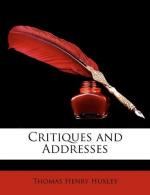IV. Professor Haeckel proposes a number of modifications in Taxonomy, all of which are well worthy of consideration. Thus he establishes a third primary division of the living world, distinct from both animals and plants, under the name of the Protista, to include the Myxomycetes, the Diatomaceae, and the Labyrinthulae, which are commonly regarded as plants, with the Noctilucae, the Flagellata, the Rhizopoda, the Protoplasta, and the Monera, which are most generally included within the animal world. A like attempt has been made, by other writers, to escape the inconvenience of calling these dubious organisms by the name of plant or animal; but I confess, it appears to me, that the inconvenience which is eluded in one direction, by this step, is met in two others. Professor Haeckel himself doubts whether the Fungi ought not to be removed into his Protista. If they are not, indeed, the Myxomycetes render the drawing of every line of demarcation between Protista and Plants impossible. But if they are, who is to define the Fungi from the Algae? Yet the sea-weeds are surely, in every respect, plants. On the other hand, Professor Haeckel puts the sponges among the Coelenterata (or polypes and corals), with the double inconvenience, as it appears to me, of separating the sponges from their immediate kindred, the Protoplasta, and destroying the definition of the Coelenterata. So again, the Infusoria possess all the characters of animality, but it can hardly be said that they are as clearly allied to the worms as they are to the Noctilucae.
On the whole, it appears to me to be most convenient to adhere to the old plan of calling such of these low forms as are more animal in habit, Protozoa, and such as are more vegetal, Protophyta.




